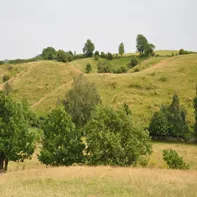Theme 1: Synergies and trade-offs
between agricultural production and delivery of multiple ecosystem services
The overall objectives of this theme are to assess how agricultural land-use at different spatial and temporal scales affects biodiversity and multiple ecosystem services, and to visualize these effects in ecological production functions. An important first step in this work is to understand how species identity, dominance, trait and functional composition determine the delivery and stability of single ecosystem services.
Using this knowledge, we can determine synergies and trait-offs of multiple ecosystem services and the scales at which these are affected. In parallel, we develop a framework for ecological production function modeling and use these models to find and evaluate novel measures for integrating biodiversity conservation with agricultural production. This part of our work will be done in close collaboration with stakeholders and policy makers. Finally, we will bring together this information to map multiple ecosystem services and to develop, parameterize and validate scale and land-use dependent production functions for multiple services.
Our research includes the most important services in agro-ecosystems, i.e. biological control (of cereal aphids by their natural enemies), soil services, pollination and overall biodiversity. Scenario modeling and the AgriPoliS model are used to model the scale and land-use dependent production functions.
